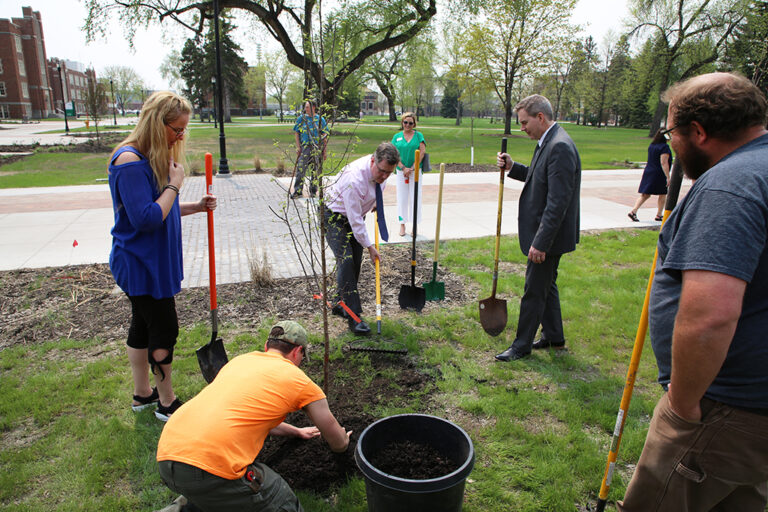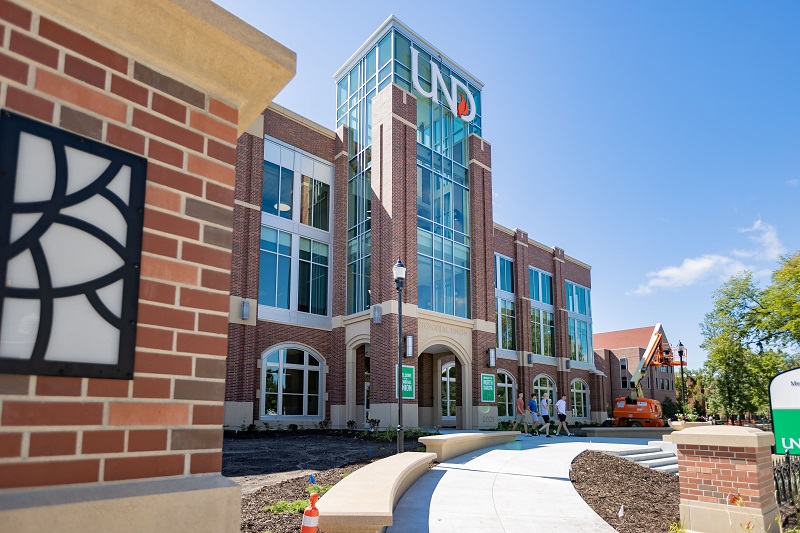UND Dubs its Space Station-mounted Agricultural Camera ISSAC
ISSAC is the new name for an agricultural camera designed and built by UND students and faculty. The International Space Station Agricultural Camera, or ISSAC (pronounced as in Isaac Newton) was delivered to the space station last year.
“ISSAC is a space-related research project that will result in the delivery of direct benefits from space to the general public,” said Doug Olsen, ISSAC project manager. “The ISSAC project is in the midst of developing an upgrade to its camera sensor, which is expected to be launched in April 2011. It will resume operations during the 2011 growing season.”
ISSAC is designed to take frequent images, in visible and infrared light, of vegetated areas on the Earth, principally of growing crops, rangeland, grasslands, forests, and wetlands in the northern Great Plains and Rocky Mountain regions of the United States. Images will be delivered within two days directly to requesting farmers, ranchers, foresters, natural resource managers and tribal officials to help improve their environmental stewardship of the land. Images will also be shared with educators for classroom use.
The system allows users to select specific geographical areas of interest over which to request collection of imagery in both red and near-infrared bandpasses, and at medium-high spatial resolution. Farmers using variable-rate application and other precision agriculture techniques will be able to dynamically delineate management zones as the crop vegetation canopy changes during the growing season; this can result in more effective use of fertilizer and other chemical inputs and reduce negative environmental effects.
Originally, the camera was called “AgCam.” But UND changed the name following notice from a North Dakota company, Dakota Micro Inc., that it had registered a claim on the name. “We both thought it was a good name. But Dakota Micro Inc. is a North Dakota business with a very viable product. It was easier for the University to change the name of its scientific camera, so we thought that was the best path for everyone involved,” said Peter Johnson, UND executive associate vice president for university relations.
U.S. Senator Byron Dorgan, who helped secure funding for the ISSAC project, called it a “partnership between UND and NASA that will give a boost to the reputation of our region and help farmers and ranchers across the Upper Great Plains.”
“The UND interdisciplinary effort that has produced this camera is a remarkable story,” said UND President Robert O. Kelley. “Faculty and students from several colleges and centers on campus have produced an instrument that will analyze the composition of agricultural and other natural resources on the surface of the earth from the International Space Station.”
“The consolidation of multiple technologies into a single instrument will add tremendous economic value to the agricultural industry in North Dakota and around the world,” Kelley said. “UND and NASA have forged a very productive partnership in this initiative.”
ISSAC is operated from the Science Operations Center (SOC) on the UND campus, staffed by students from across the campus, including from the John D. Odegard School of Aerospace Sciences and the School of Engineering and Mines. From the SOC, students will send commands to ISSAC to take images and transmit them to SOC, where they’ll be processed and delivered to end users. Images captured by the camera will be made available to the public through UMAC’s Web page (see http://www.umac.org/).
— Doug Olsen, ISSAC project manager, Center for People and the Environment, 777-3543, olsen@aero.und.edu.


